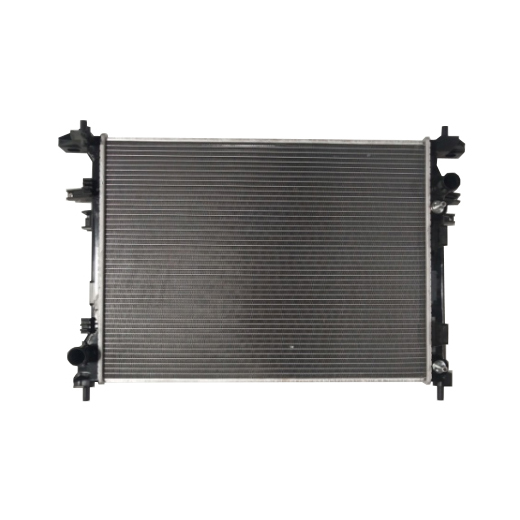Exploring the Innovation: Understanding Automotive Aluminum Plastic Radiators
2024-03-01
Introduction:
In the ever-evolving landscape of automotive technology, advancements are continually made to enhance performance, efficiency, and durability. One such innovation that has revolutionized vehicle cooling systems is the automotive aluminum plastic radiator. In this blog post, we'll delve into what exactly an automotive aluminum plastic radiator is, how it works, and the advantages it offers over traditional radiator designs.
What is an Automotive Aluminum Plastic Radiator?
An automotive aluminum plastic radiator is a type of radiator commonly used in modern vehicles to cool the engine and maintain optimal operating temperatures. Unlike traditional radiators, which typically feature copper-brass construction, automotive aluminum plastic radiators utilize a combination of aluminum and plastic materials in their design.
Components of an Automotive Aluminum Plastic Radiator:
1. Aluminum Core: The core of an automotive aluminum plastic radiator is typically made of lightweight aluminum. Aluminum offers excellent heat transfer properties, allowing for efficient dissipation of heat generated by the engine.
2. Plastic Tanks: The radiator's end tanks, where coolant enters and exits the core, are usually made of durable plastic. Plastic tanks are lightweight, corrosion-resistant, and less prone to damage compared to traditional metal tanks.
3. Tubes and Fins: Inside the aluminum core are numerous small tubes through which coolant flows. These tubes are connected to thin aluminum fins that increase the surface area available for heat exchange, facilitating efficient cooling.
4. Seals and Gaskets: Automotive aluminum plastic radiators feature seals and gaskets made of rubber or other synthetic materials to prevent coolant leaks and ensure a secure connection between components.
How Does an Automotive Aluminum Plastic Radiator Work?
The operation of an automotive aluminum plastic radiator is similar to that of traditional radiators:
1. Coolant Circulation: Coolant (a mixture of water and antifreeze) flows from the engine through the radiator inlet, where it enters the core.
2. Heat Dissipation: As the coolant passes through the radiator core, it absorbs heat from the engine. The aluminum construction of the radiator facilitates efficient heat transfer, allowing the coolant to dissipate heat into the surrounding air.
3. Cooling: As air passes over the fins of the radiator core, heat is transferred from the coolant to the air, cooling the coolant before it returns to the engine to absorb more heat.
4. Return to Engine: Cooled coolant exits the radiator through the outlet and circulates back to the engine to continue the cooling process, maintaining the engine's operating temperature within the optimal range.
Advantages of Automotive Aluminum Plastic Radiators:
1. Lightweight: Aluminum plastic radiators are significantly lighter than traditional copper-brass radiators, contributing to overall vehicle weight reduction and improved fuel efficiency.
2. Corrosion Resistance: The plastic components of aluminum plastic radiators are highly resistant to corrosion, prolonging the radiator's lifespan and reducing the risk of leaks.
3. Efficient Heat Transfer: Aluminum has excellent thermal conductivity, allowing for efficient heat transfer from the coolant to the surrounding air, resulting in effective engine cooling.
4. Durable Construction: The combination of aluminum and plastic materials in automotive aluminum plastic radiators results in a durable and robust construction that can withstand the rigors of daily driving.
5. Cost-Effectiveness: While initially more expensive than traditional radiators, aluminum plastic radiators offer long-term cost savings due to their durability, corrosion resistance, and lightweight design.
Conclusion:
In conclusion, automotive aluminum plastic radiators represent a significant advancement in vehicle cooling system technology. With their lightweight construction, efficient heat transfer capabilities, and durability, they offer numerous advantages over traditional radiator designs. As automakers continue to prioritize performance, efficiency, and reliability, the adoption of aluminum plastic radiators is expected to become increasingly prevalent in modern vehicles.



